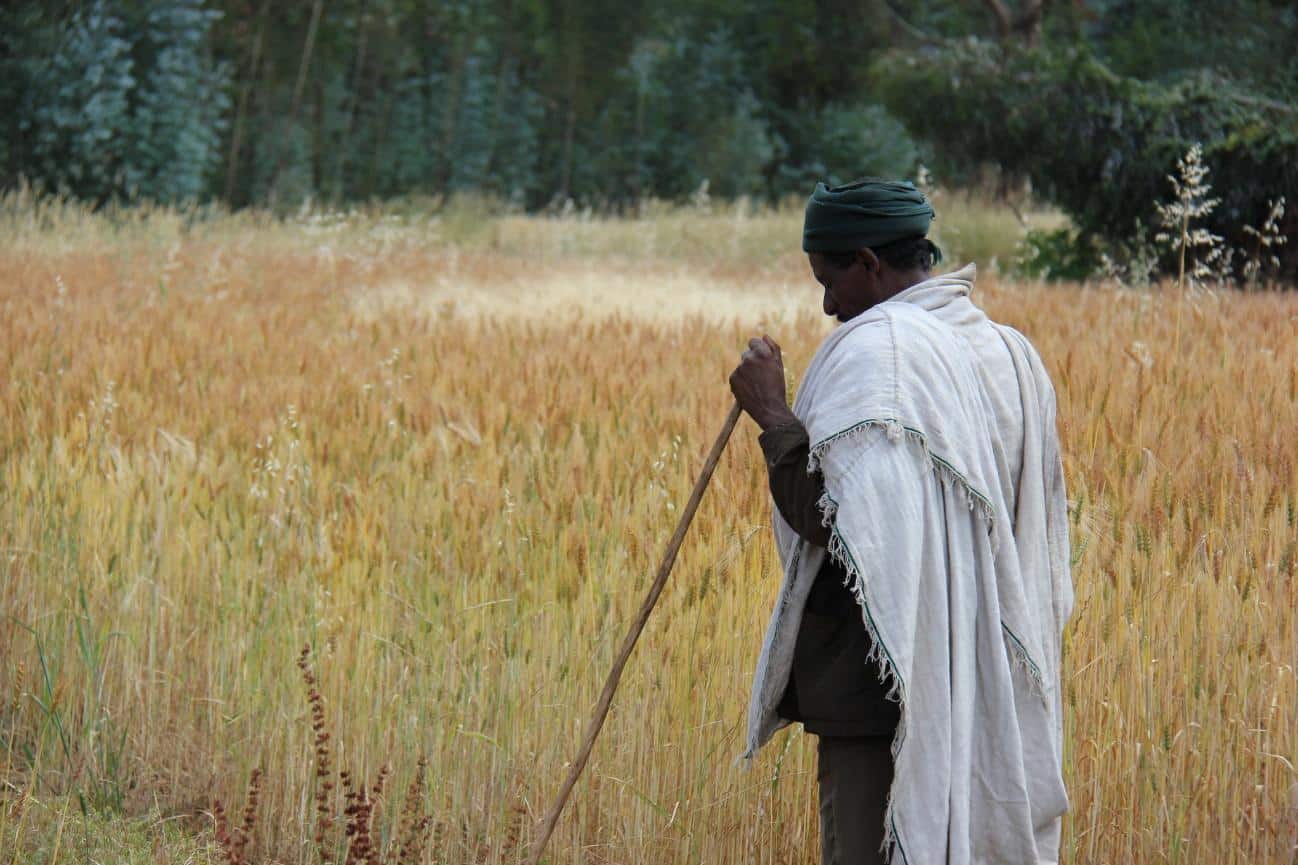Ethiopia is the largest wheat producer in sub-Saharan Africa, but has also been a major wheat importer–until last year. Over the past couple of years, improvements in irrigation, seeds, and management have allowed the cultivation of a second season of irrigated wheat, greatly increasing production. Jemal Abdulkeriman, an Assistant Professor of Agronomy at Madda Walabu University, applied for a grant from Grow Further to study what’s working and further improve off-season wheat production.
In an extensive interview, Dr. Abdulkerim laid out how Ethiopia’s government is trying to boost wheat output through improved irrigation, whether it’s working, and the research plan he submitted to us where he proposes to simulate the impact of expanding irrigation on smallholder wheat farming while providing these data to promote expanded off-season wheat production.
As Abdulkerim explained to us, a fast-growing population in Ethiopia means rapidly growing wheat demand; domestic production has failed to keep up with this rising demand. Imports are expensive and susceptible to disruptions such as conflict in Ukraine. In 2019, the government launched a campaign to boost off-season wheat growing. Now, Abdulkerim believes it’s time to carefully analyze this campaign and determine which irrigation methods work best, and which do not. He then wants to arm smallholder farmers with this knowledge, training them in technologies and techniques to help Ethiopia feed its growing appetite for wheat.
Our Q&A with Dr. Jemal Abdulkerim follows.
Lifting up Ethiopia’s wheat farmers: an interview with Dr. Jemal Abdulkerim
Q: Why is the government of Ethiopia trying to encourage off-season wheat production?
A: Despite the fact that Ethiopia is known as “the Water Tower of East Africa” because of its high altitude, large rivers that flow towards its neighbors, and the abundance of surface and groundwater potential that could be accessed for irrigation, hydropower, and other purposes, it is discovered that very few irrigation resources have been harnessed so far. Crop productivity is still far below the global average, even though the population is growing at an alarming rate and the nation’s economy is reliant on agriculture.
One of the concerns of the government was how to efficiently use the resources that were available while also ensuring the food needs to be driven by the rapid population growth, reducing the unemployment rate, and boosting the economy.
The mismatch between production and demand is too great. Because of all these facts, the government strongly promotes “off-season wheat production”.
Q: Have the government’s efforts been at least partially successful?
A: Even though a number of challenges are there and crop productivity is lower than normal, off-season wheat production is still moving forward and expanding into new locations and zones since 2020. The Ethiopian Prime Minister, the Ministry of Agriculture, and Regional State Agricultural Offices have all declared that the campaign was effective.
The government’s intense focus, the local farmers’ prior experience producing wheat using a rain fed system, and the dedication of extension workers and stakeholders may all have contributed to the partial success. But to confirm the full success, it has to be supported by detailed research.
Targeted simulations
Q: You plan to the effectiveness of the program by simulating how different irrigation scenarios might benefit Ethiopia’s wheat production, correct?
A: Farmers and experts are unsure of how to adapt to climate change and increase water-use efficiency in order to increase productivity because the off-season wheat production system is a relatively new phenomenon and approach for them. They know little about the irrigation method to be applied, the ideal field water requirement, and the crop water requirement of the wheat crop.
Consequently, simulation and validation of the proper irrigation scenario and irrigation method using the model AquaCrop is a very crucial decision for profitable wheat production and water productivity, especially where deficit irrigation is a major problem.
Q: How do you plan to run these simulations? Mainly by computer models?
A: No, not only computer simulation.
In order to simulate, there are several soil, crop, and climate-related information like soil water content, canopy cover, final biomass, yield, etc. which are needed for the tuning purpose.
To validate the simulation, fieldwork will be conducted to collect the data of observed values during off-season wheat production in multiple seasons and locations in the study area. Observed values of each parameter from the field will then be compared with the simulated values and finally validated.
“Farmers and experts are unsure of how to adapt to climate change and increase water-use efficiency in order to increase productivity because the off-season wheat production system is a relatively new phenomenon.”
Initial hints
Q: Already getting a sense of what irrigation practices might work best in off-season wheat growing in Ethiopia?
A: As the growing season transitioned into the off-season, it is evident that the air humidity, air temperature, light, and soil moisture conditions altered. The results of the studies demonstrated that even a very slight rise in temperature during the reproductive stage may result in greater losses in wheat grain yield. Thus, sprinklers might be preferable for C3 crops [crops like wheat that utilize C3-type photosynthesis] in order to regulate leaf surface temperature, avoid heat stress, and improve the above ground microclimate in general.
On the other hand, in some instances, the groundwater has a salinity issue because of the makeup of the soil’s parent material. In those areas, frequent application of excessive water using furrow irrigation could cause the water table to rise into the root zone and develop secondary salinization.
However, to make a reliable and acceptable recommendation, it is better to conduct experiments across locations and over seasons.
— Grow Further
Photo: A farmer attending field training in Ethiopia. Bioversity International/Flickr.




